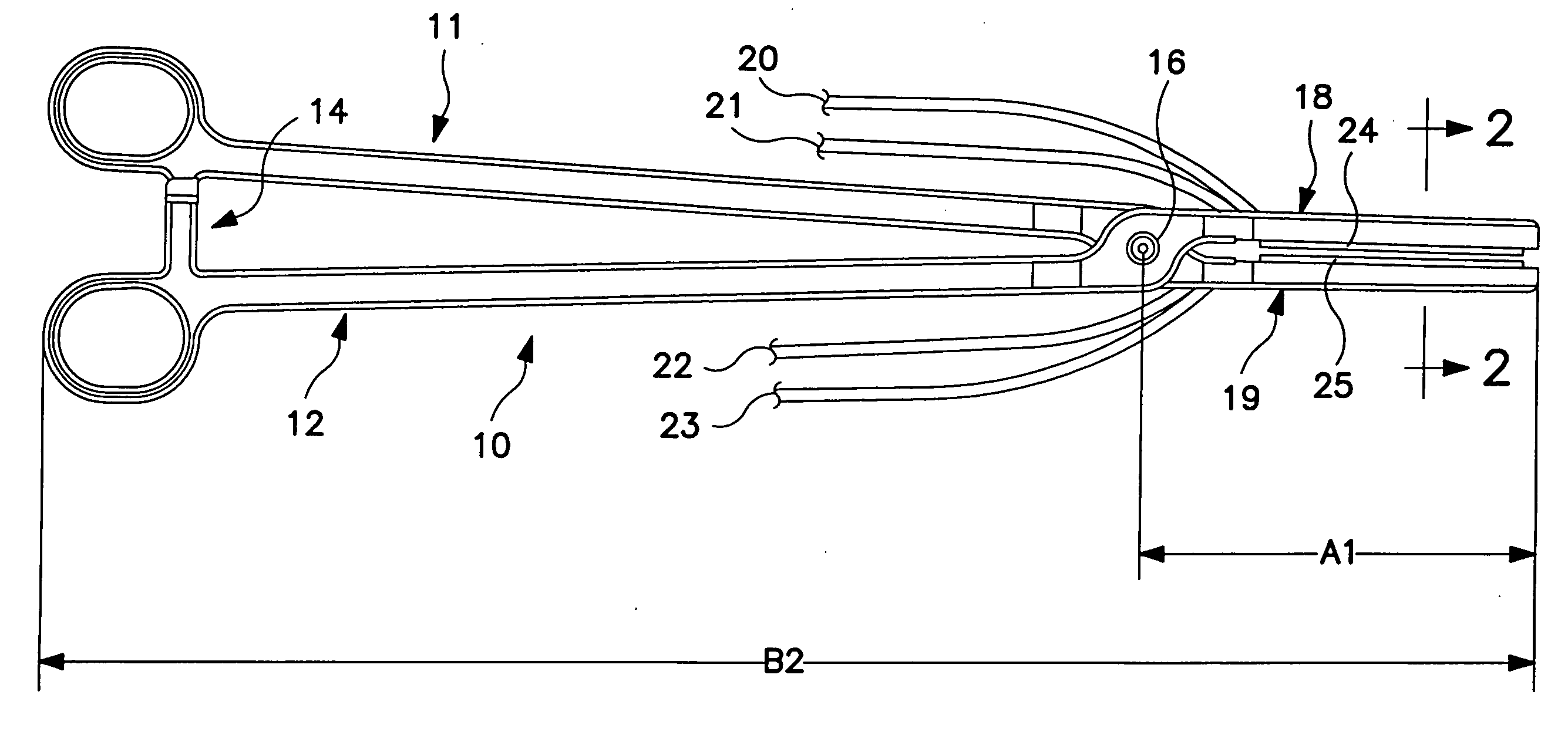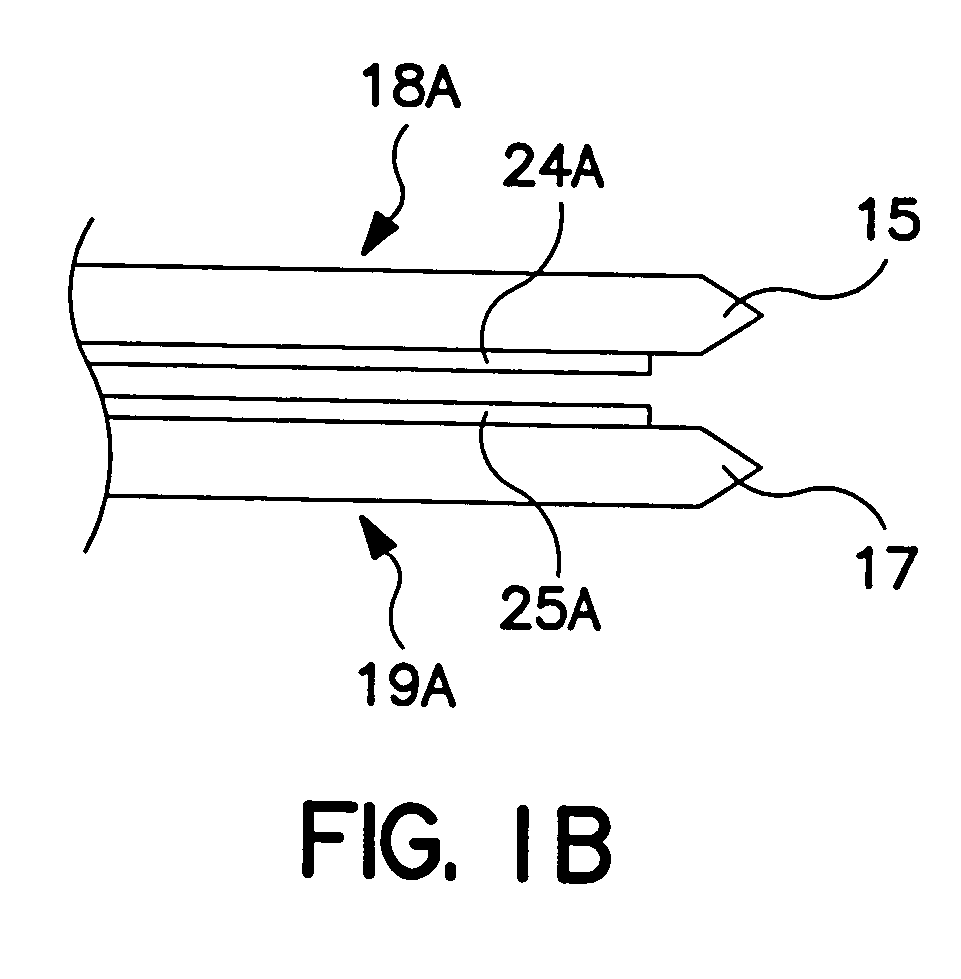Method and system for treatment of atrial tachyarrhythmias
a technology of atrial fibrillation and atrial tachyarrhythmia, which is applied in the field of surgical instruments and procedures, can solve the problems of difficult to achieve the goal of using dry ablation electrodes or electrodes, and the procedure is quite complex
- Summary
- Abstract
- Description
- Claims
- Application Information
AI Technical Summary
Problems solved by technology
Method used
Image
Examples
third embodiment
[0023]FIG. 2C illustrates a third embodiment according to the present invention. In this case, elements also correspond to identically numbered elements in FIG. 2A. However, in the embodiment of FIG. 2C, elongated guides or flanges 35 are added in order to enhance longitudinal alignment of the jaws 18 and 19, along their length. When heart wall tissue is compressed between jaws 18 and 19, flanges 35 tend to retain jaws 18 and 19 and correspondingly electrode coils 30A and 33A in alignment with one another, through the intermediary of the atrial wall tissue.
fourth embodiment
[0024]FIG. 2D illustrates a fourth embodiment, corresponding generally to that illustrated in FIG. 2B, discussed above. Elements correspond to identically numbered elements in FIG. 2B. In addition, jaws 18 and 19 are each provided with elongated magnetic elements 37, arranged to assist in pulling jaws 18 and 19 toward one another when the jaws are closed around atrial wall tissue. Elements 37 may be formed of rare earth magnets, so that their mutual attraction provides additional compressive force along the length of jaws 18 and 19, enhancing contact with atrial wall tissue. In the case of embodiments in which the cross sectional size of jaws 18 and 19 is reduced in order to facilitate insertion into tight spaces, inclusion of magnets 37 is believed particularly valuable. The inclusion of magnets 37 is also believed particularly valuable in embodiments in which jaws 18 and 19 are fabricated of a less rigid material, for example a somewhat flexible plastic as opposed to a rigid metal...
PUM
 Login to View More
Login to View More Abstract
Description
Claims
Application Information
 Login to View More
Login to View More - R&D
- Intellectual Property
- Life Sciences
- Materials
- Tech Scout
- Unparalleled Data Quality
- Higher Quality Content
- 60% Fewer Hallucinations
Browse by: Latest US Patents, China's latest patents, Technical Efficacy Thesaurus, Application Domain, Technology Topic, Popular Technical Reports.
© 2025 PatSnap. All rights reserved.Legal|Privacy policy|Modern Slavery Act Transparency Statement|Sitemap|About US| Contact US: help@patsnap.com



